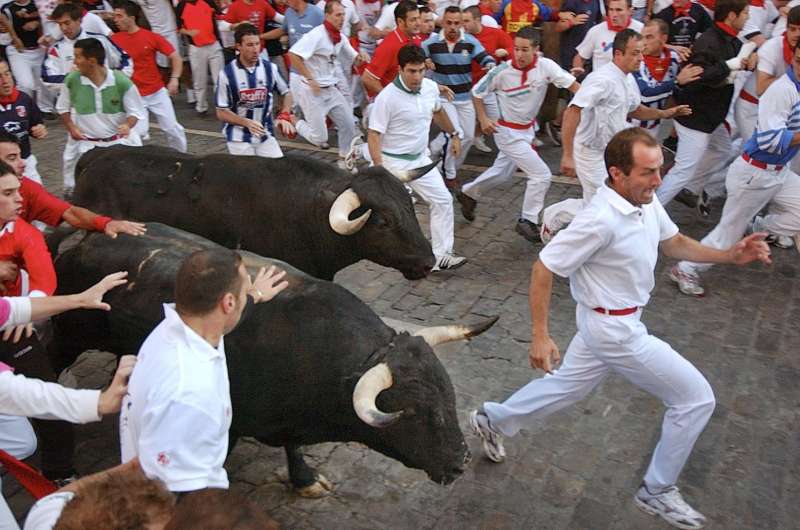Researchers analyze the risk of the Pamplona bull using an engineering risk management tool

Fermín Mallor-Giménez, Professor of the Department of Statistics and Operational Research, and Javier Belloso-Ezcurra, lecturer in the Department of Mathematical Engineering and Computing will be presenting the results of a study of the risks that confront participants in the annual Pamplona bull runs.
"Basically, the risk affects both the runners and the bulls and the sources of this risk are the bulls themselves, the runners and the route," explained Javier Belloso, a participant in the bull runs himself. "As regards the runners, they may incur slight injuries such as falls, scratches, breakages, or worse, which can lead to their deaths in some cases. And the bulls are also put at risk, as they can suffer physical consequences such as broken horns or hooves, apart from 'learning' during the race if someone touches them or if they charge a runner".
The two authors of this study have applied a tool used in engineering to manage risk plans, known as the Modal Analysis of Faults and Effects (AMFE). "With risk control, the idea is that the bull should be the only risk in the bull run so that the runners are not affected by other elements such as the state of the streets, the presence of insufficiently fit runners or if the runner himself does feel well enough to run," said Fermín Mallor. "In an industrial process, what is sought is the absolute minimization of risk, zero risk. But in the bull run, this is impossible because the essence of this race is, in fact, the risk."
So various players intervene in the preparation and control of the bull run; their aim is to eliminate any risks generated apart from the bulls and which include the cleaning services, the carpenters who install the fencing, the police officers, the herdsmen and the "dobladores"—people equipped with capes who are responsible for getting any bulls that remain in the ring at the end of the race into the pens as soon as possible to protect the runners.
"During the bull run, one accepts that the bull poses a risk for the runner, so the organisers seek to totally minimize all the consequences of that risk through medical assistance," added Fermín Mallor. "That is why the number of ambulances deployed is oversized. The likelihood of needing all the ambulances is very small, about one in 10,000, as long as there are no extraordinary events and the run proceeds in a 'normal' way."
Provided by Elhuyar Fundazioa


















